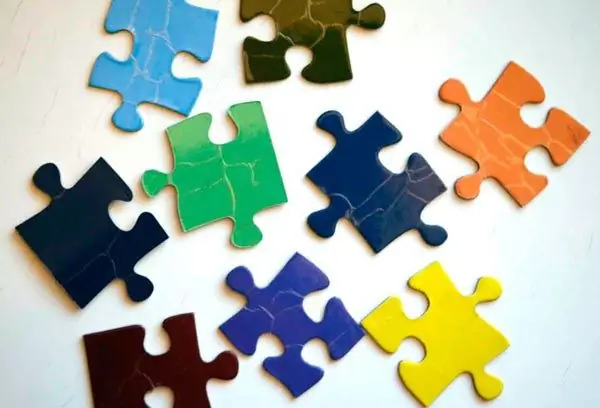Bright and interesting puzzles are one of the favorite fun of kids. These colored cardboard squares of various shapes are very useful for the development of the baby, so you need to approach the choice of the puzzle with all responsibility.

The benefits of puzzles
First of all, puzzles develop logical thinking in children - in the process of assembling a complete picture, the child learns to compare parts of the image on them, choosing and connecting puzzle elements to each other. Also, puzzles have a positive effect on the development of memory and attentiveness - with multiple assemblies of the same picture, the child trains visual memory, and when looking for pieces of a puzzle from a common heap, he also develops skills to quickly grab the necessary elements.
Puzzles have a beneficial effect on the physical development of the child - namely, on the fine motor skills of the fingers.
Young children who make up a puzzle compare only adjacent parts, while older kids try to separate a whole image from disparate elements, which develops imaginative thinking. Parents should make sure that the child ends up with the intended image, and not a set of puzzle pieces that just fit in shape and color. And finally, jigsaw puzzles are great for the development of the eye even in the smallest children.
Choosing a puzzle
For babies from nine to twelve months, the simplest take-out puzzles are ideal - large elements with a handle, which are placed on a small board. Young children cannot yet put together a full-fledged puzzle, but they can take out its individual parts in the form of fruits or animals, which contributes to the development of the grasping reflex and concentration.
Parents should name the items the child has pulled out and talk about them, increasing the toddler's vocabulary.
Children from two years old can already purchase classic jigsaw puzzles consisting of 4-6 elements. It is advisable to choose wooden puzzles that are more durable and environmentally friendly - after all, kids love to pull small objects into their mouths. It is good if a picture with an image that should come out after completing the puzzle is attached to the puzzle - this will make it easier for the child to cope with the task.
The picture of the puzzle should not be abstract or too complex - a clear large picture is the best choice. It should also be very colorful, but at the same time the colors should correspond to the real state of affairs, so that the puzzle does not distort the children's perception of pink dogs and purple bears - after all, through the image, the child learns the real, not the cartoon world.






